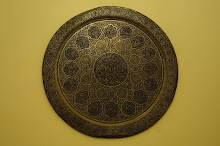 For more than two centuries, archaeological excavations at cemeteries in Egypt dating back to Roman times have unearthed some unusual and powerful images. These are the painted mummy portraits, often referred to as "The Fayoum Portraits" - so named because of the frequency in which these artifacts have been unearthed in the lush Fayoum Basin, southwest of Cairo.
For more than two centuries, archaeological excavations at cemeteries in Egypt dating back to Roman times have unearthed some unusual and powerful images. These are the painted mummy portraits, often referred to as "The Fayoum Portraits" - so named because of the frequency in which these artifacts have been unearthed in the lush Fayoum Basin, southwest of Cairo.These realistic portraits of the deceased, usually painted on wood panels or on cloth and attached to the mummified remains of the dead, have been found all over Egypt and not just in the Fayoum.
These remarkable works date back to the period from the 1st century BC until the 3rd century AD. The use of this art in the funerary rites of the time point to the fusion of two traditions - those of Pharaonic Egypt and that of the Classical World.
The idea of an afterlife, derived from the ancient Egyptians, stipulated the importance of physically attaching or leaving close to the body an idealized image of the deceased. The Greco-Roman art of panel painting, highly popular in Rome in those days, was the method of choice for people with enough money to afford to be mummified and have themselves sketched. Owing to Egypt's dry climate, these panel paintings have survived nearly intact and continue to be found to this day.
Little is known of these people beyond what can be inferred from their very "Roman" appearances. These poignant and highly personal images of what were once very real people, our ancestors, literally stare at us from another time and place: ancient faces that speak of lives lived, of empires come and gone, and of knowledge practiced and superseded. They are a testament to the inevitability of change and thus speak to the transitory nature of all those things which we struggle to make permanent at unnecessary and often tragic costs - political and economic systems, religious convictions, borders, power structures, and ruling dynasties..






All text in this post copyright John Zada and John Bell 2008













1 comment:
Very powerful. The eyes, especially in the first painting, seem to be looking right out at you.
Post a Comment